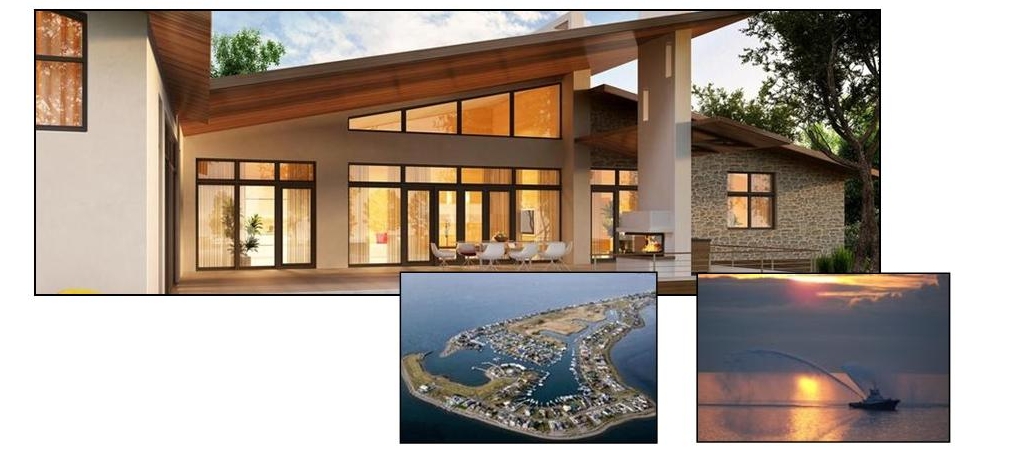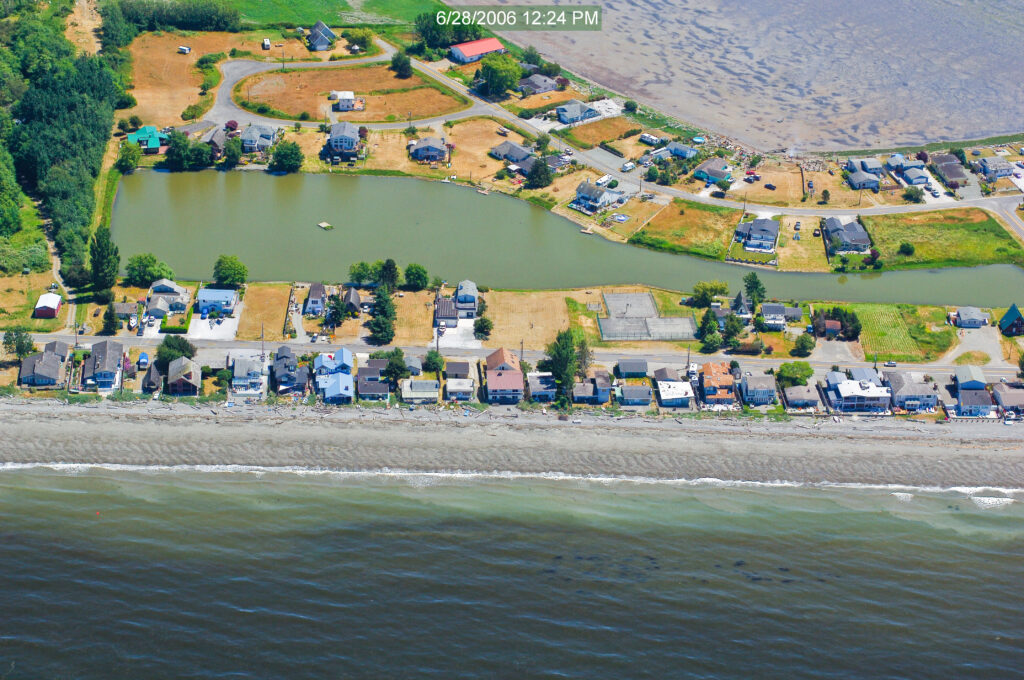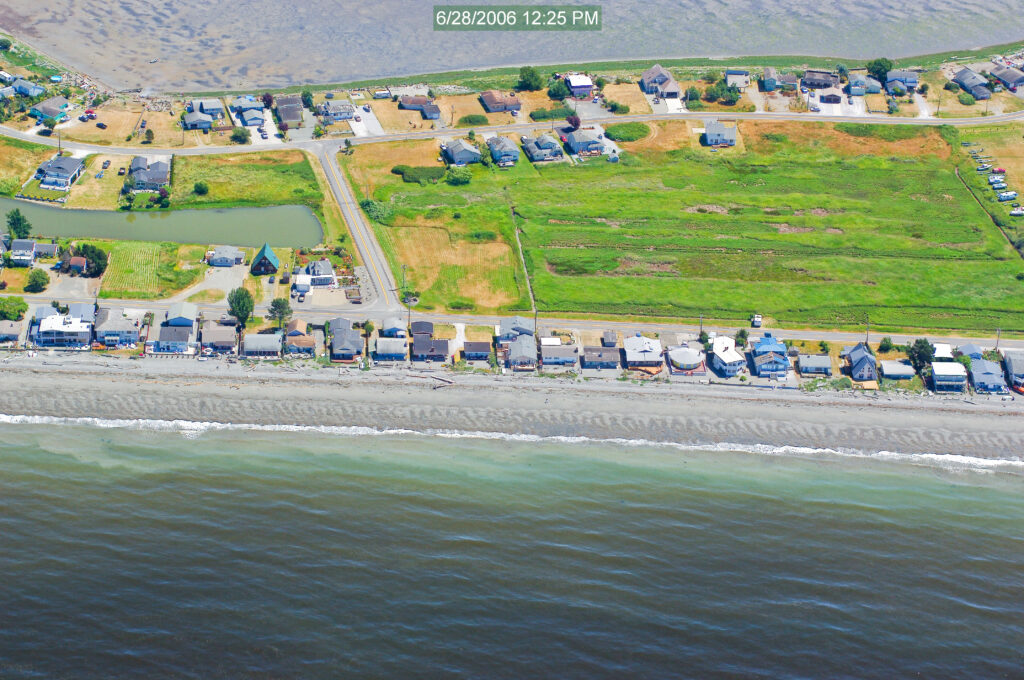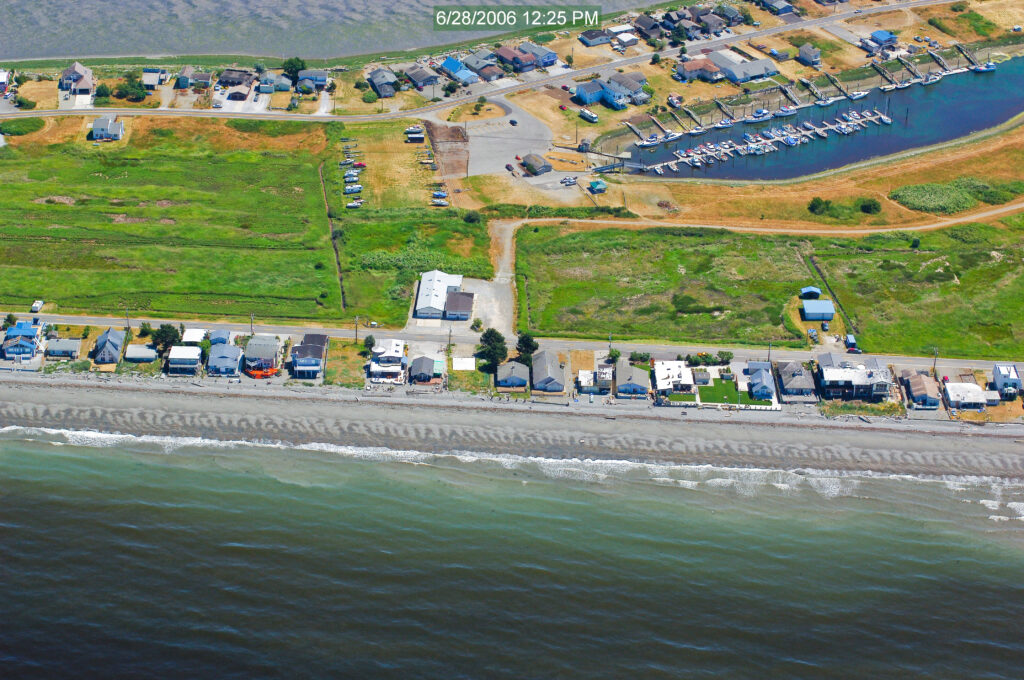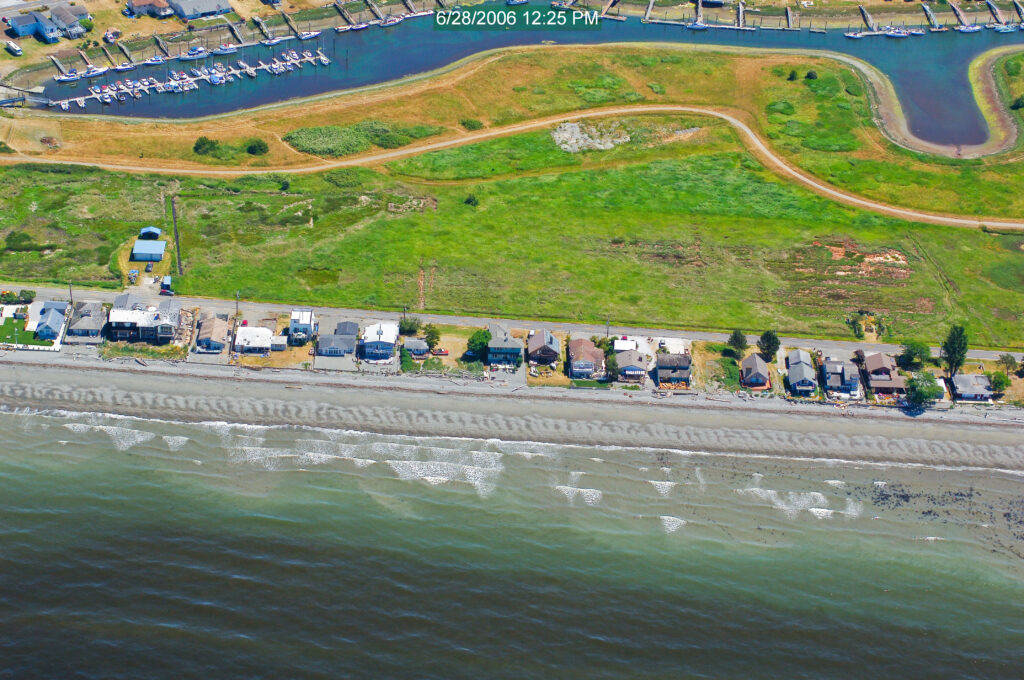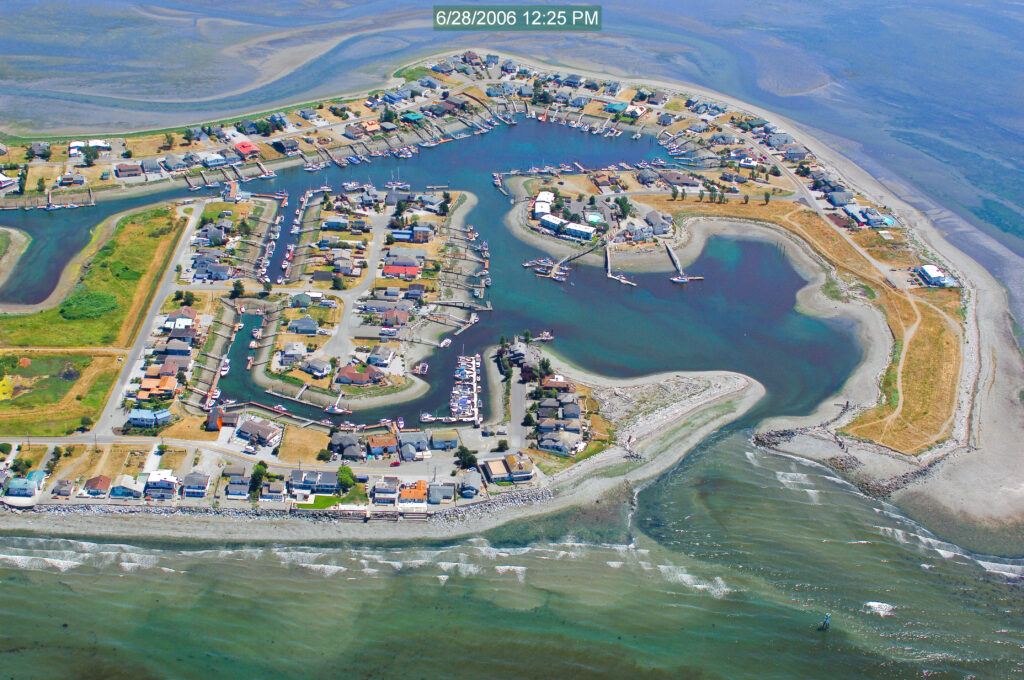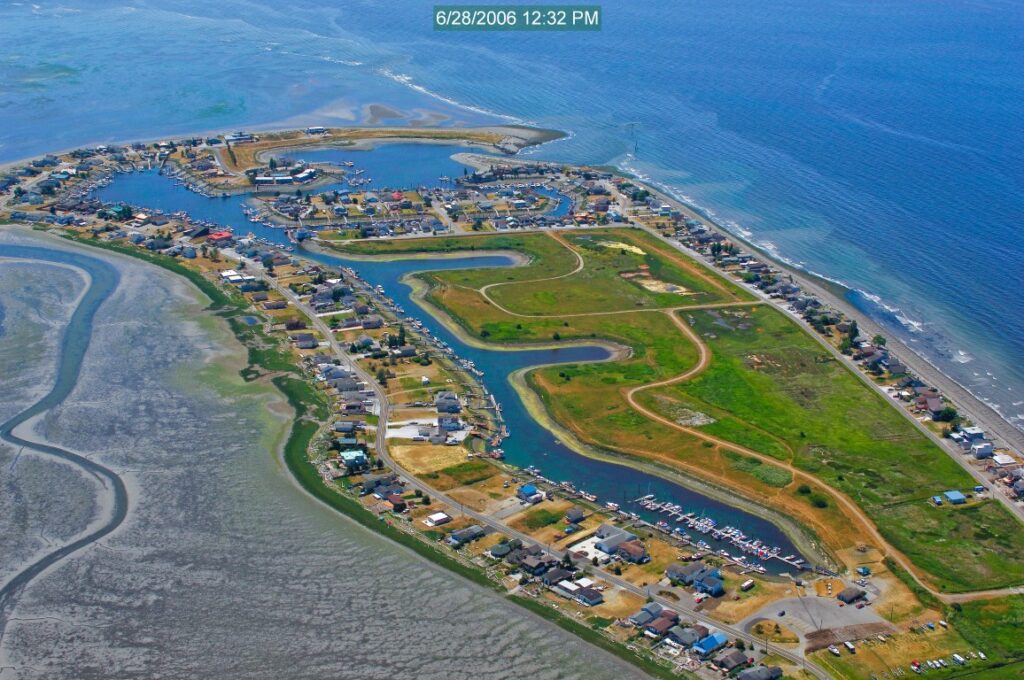Most of these Aerial Photos were taken in 2006 and are from the Dept of Ecology, – WA State Coastal Atlas. Pictures start from the North (Neptune Beach) and continue South down the point. Since change happens slowly on Sandy Point, they’re still a good reference for what you’ll currently find.
History of Sandy Point:
In recent history, Sandy Point has become the generic name of a land area that extends Southward into Rosario Strait, and looks out on the Northern San Juan Islands. There are actually several small communities or developments that make up the whole of Sandy Point and the headlands that lead to it. Slater Road (the Northern boundary of the general area) travels West until in turns South, onto Beach Way, and into the community of Neptune Beach. Continuing down the road, you’ll turn onto Sucia Drive, past Germaine Road (which would lead up to the Neptune Heights development). You won’t really know when you are leaving Neptune Beach, however there is a section of Tribal or “United States Department of the Interior” owned property to the South of the development.
Continuing down Sucia Drive, you’ll come to a sign that welcomes you to Sandy Point Shores. This area, along with Sandy Point Heights (accessed from Lake Terrell Road) are part of the “Sandy Point Improvement Company” (SPIC) development, forming a community that includes a marina, club house, tennis courts, water system, and swimming pool. Owning property within the SPIC development comes with minimal dues, and includes use of the facilities. SPIC uses Lummi Sewer, PSE, and Comcast. There is no gas line, but propane is available. More information can be found at:
The area South of Slater Road is part of the Lummi Indian Reservation. Property ownership on Sandy Point is “Fee Simple” (deeded ownership, not leased land). Further back in history, the whole of Sandy Point was inhabited by Tribal members who lived here for many thousands of years until their first contact with non-native cultures (primarily Russians, Spaniards, Japanese and Englishmen), in the early 1800’s. American traders made contact between 1800 and 1850. In 1855, the Lummi Nation (along with the majority of tribes in what would become Washington State) signed the Treaty of Point Elliot with the U.S. Government, part of which established the Lummi Indian Reservation. Contact us for copies of original documents.
Plat Map of Sandy Point Shores (the extended Sandy Point peninsula)
If you are interested in living on Sandy Point:
There are issues to be aware of and to decide if they are important to you;
Water and Sewer hookups may not be available to some parcels.
Waterfront homes may need to address the question of jurisdiction (and associated costs) concerning any bulkhead that may be on the property.
Waterfront homes may have levels of occasional flooding during very high tides, combined with Westerly winter storms.
Each property is its own research project as no two properties are quite the same. You will need to be involved in the research, and decide what you are comfortable with.
That said, It’s an Incredible Place to Live!
Sandy Point & Neptune Beach Link List
- Home
- About
- Neptune Beach
- Neptune Heights
- Sandy Point
- Sandy Point Heights
- Marine Navigation
- Homes Property
- Links
- History
- Contact
- Tsunami Risk Info
History and Links Pages have additional details.
